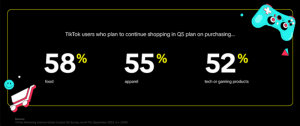 It is well-known that in today’s economy, job seekers face unprecedented challenges. One of them is the large numbers of applicants chasing just a few openings, but another is their lack of understanding of the rules of the competition. Many discount the fact that employers use different methods of selecting final candidates by applying certain technology, and those job applicants simply keep doing what they did years ago, when they almost always had success finding a job.
It is well-known that in today’s economy, job seekers face unprecedented challenges. One of them is the large numbers of applicants chasing just a few openings, but another is their lack of understanding of the rules of the competition. Many discount the fact that employers use different methods of selecting final candidates by applying certain technology, and those job applicants simply keep doing what they did years ago, when they almost always had success finding a job.
Data supporting the facts about job application are available online via such sources as wsj.com, CareerBuilder, TheLadders, staffing.org, Adecco, and BeHiring. Here are a few of those facts: On average, 200 to 300 résumés are received for every single corporate job opening. Half of those will be screened out by recruiters or applicant-tracking-system (ATS) software. About 20 to 30 résumés will be reviewed by the decision maker. Only 4 to 6 will be invited for interviews. One to 3 might be invited back for a final interview, and ultimately, of course, one will be offered the job. And then, 20 percent of applicants given an offer will reject it. Surprised?
Data shows that recruiters spend on average six seconds reviewing a résumé. Their eyes follow a certain pattern by seeking out (1) job titles, (2) companies you worked at, (3) start and end dates, and (4) your education. Recruiters are known to deselect résumés with even one tiny typo, résumés of applicants not currently employed, and, often, if your name or certain other information reveals something the recruiter has a bias against.
Applicants should realize that many ATSs are simply not able to scan and read résumés that are in .pdf or other formats. A very high number—sometimes up to 90 percent—of résumés are rejected because they have not been customized to the specific job opening. Before initiating contact with an applicant, recruiters typically search on the Internet for additional information about the person. Mostly they look at LinkedIn, and if the applicant has no photo, that’s another reason to move on to the next prospect. If there is indeed a photo, it should be professional looking and complimentary. Sometimes people even apply for positions that do not exist. Or a posted job description got changed in the meantime.
Recruiters don’t have an easy job because if they submit candidates to be interviewed who in the eyes of the hiring managers don’t have the perfect qualifications those hiring managers are looking for, the recruiters will hear about it in a derogatory way.
So, what’s the answer to increasing your chances of being chosen for an interview? Here are a few suggestions.
- Your résumé should be customized for application to each and every specific position.
- You should ensure that it contains many of the keywords included in the job description.
- It should have no typos or misspellings or grammatical errors.
- It should be in the standard résumé format starting with the job title you’re applying for, followed by your past employers and including your titles, and ending with your education.
- After you customize your résumé for the position, you should save it in plain-text format with everything flush left and submit that. A nicely formatted version can be sent at a later point.
- Your best chances for being invited to an interview lie in finding someone inside the company who would sponsor your candidacy.
(19)




